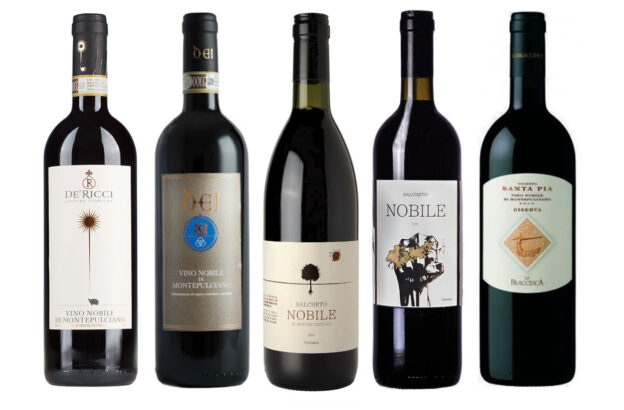Vino Nobile di Montepulciano is literally translated as Noble Wine of Montepulciano, and historically lived up to its name as a favorite amongst influential Kings, Popes, and Presidents. Even Thomas Jefferson fell under the spell of Vino Nobile. So what happened to this wine and why is not more well known today?
“For the present I confine myself to the physical want of some good Montepulciano…this being a very favorite wine and habit having rendered the light and high flavored wines a necessity of life with me. It was most superlatively good.” – Thomas Jefferson
What is Vino Nobile?
Vino Nobile is a red wine that hails from the Montepulciano region within Tuscany, Italy. As with almost all Tuscan red wines, Vino Nobile is made from Sangiovese – the same grape variety used to make its more famous cousins, Chianti and Brunello di Montalcino. Nearly two-thirds of Tuscany’s vineyards are planted with Sangiovese. It’s the region’s most important grape.
So what’s the difference between Vino Nobile and its cousins? Vino Nobile is made from a different clone of Sangiovese called Prugnolo Gentile. A grapegrower may find a specific vine in their vineyard that has a special trait or quality they want to replicate, such as a particular flavor or aroma profile they want to capture, so they clone it. A clone is a cutting or bud of a “mother” vine that is used to propagate a second plant that will be genetically identical to the first. In this case, Prugnolo Gentile is a clone of Sangiovese that has somewhat different characteristics than the Sangiovese clones used to produce Chianti or Brunello (which are also different clones from each other).
As a result of this special clone, Vino Nobile is said to have the perfume of Chianti Classico with the richness of Brunello di Montalcino. These wines are medium bodied with high acid and firm tannins. They are usually maroon-red in color and are delicious, easy to drink, and refreshing. Vino Nobile is characterized by ripe red fruit (strawberries, raspberries), herbs, spice and leather with a gently tannic “tea-leaf” finish.
Sangiovese must make up at least 70% of the final wine, with the remaining 30% being other approval local varieties including Canaiolo and Mammolo. Up to 5% may be white varieties such as Malvasia. The aging period for any Vino Nobile di Montepulciano is a minimum of 24 months (36 months for riserva wines), of which at least 12 months must be spent in oak barrels.
History
Vino Nobile di Montepulciano was highly regarded for much of Italian wine history. However, it was during the 19th century that many of Montepulciano’s large estates, which had been historically owned by local nobility, were sold to non-Tuscans and foreign investors. This led to a downturn in the wine’s quality and reputation, and it was often mis-labeled as Chianti.
Adding insult to injury, from post-World War II through the 1970s and ‘80s, Tuscan wine production focused largely on quantity over quality. Wine regions expanded into lesser quality areas to handle higher volumes of grapes, further reducing wine quality.
With the arrival of the government wine regulations in the 1960s, Montepulciano began to regain its stature as a fine and noble wine, and received further dues in 1980 when it was awarded the highest DOCG classification. This gave way to a rebirth in which the focus was on re-establishing premium quality regional wines that are world-renowned today.
What Isn’t It More Popular?
Despite its prestigious history, excellent value and high quality, many Americans have not yet discovered Vino Nobile di Montepulciano. The challenge is twofold: if you’re a Tuscan wine with more famous siblings (Chianti Classico and Brunello di Montalcino) and the name of the town you’re from is also the name of a grape from another Italian region (Montepulciano di Abruzzo), you end up getting lost in the shuffle.
Although this fantastic wine might be flying under the radar, it is actually a benefit to wine consumers! The result is that Vino Nobile is a bargain compared with its Tuscan neighbors, while still rivaling them in quality. Excellent bottles can be had for $15-$30.
Recommendations
- Avignonesi Vino Nobile di Montepulciano ($20)
- Dei Vino Nobile di Montepulciano ($24
- Carpineto Vino Nobile di Montepulciano Riserva ($28)





